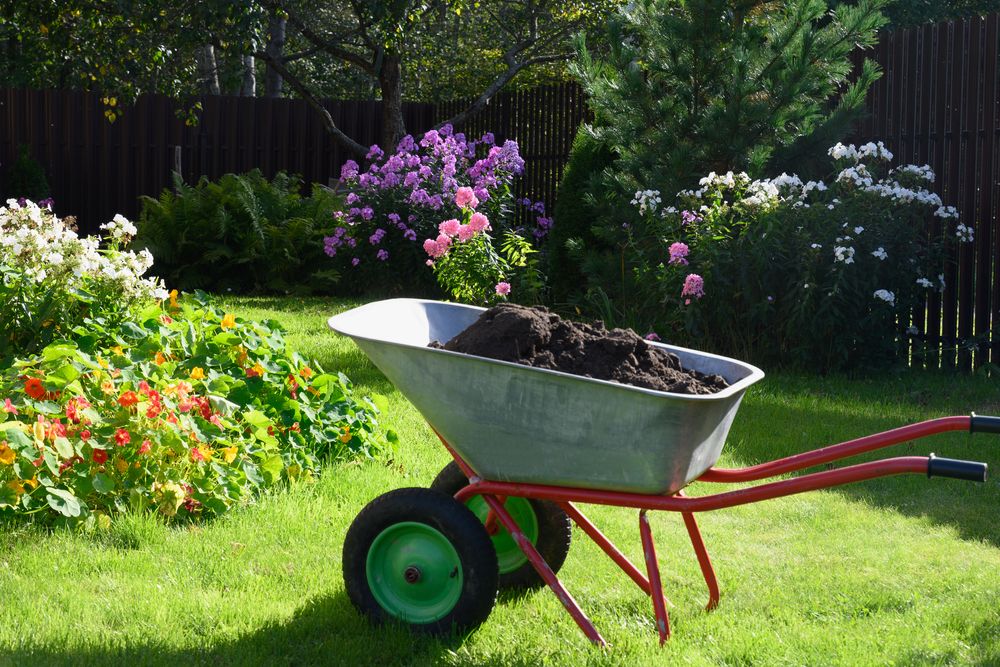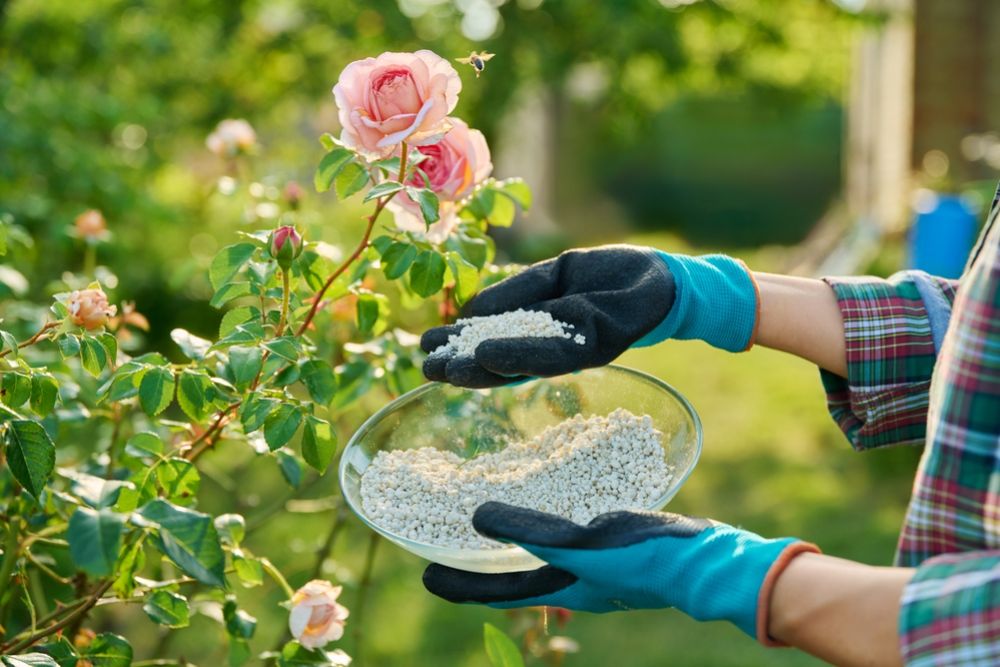A vibrant backyard filled with flourishing plants and lush grass can be a source of pride and relaxation. Yet, creating this lush oasis often requires more than just watering and sun—fertilizer provides the essential nutrients plants need to grow strong, resist disease, and produce bright blooms or hearty vegetables. But with an abundance of fertilizer types, N-P-K ratios, and application methods, choosing the right one can be a little daunting. This guide explores the basics of fertilizer, how to read product labels, and strategies for ensuring your plants get the perfect nutrient blend, helping you maintain a healthy, thriving backyard garden.
1. Why Fertilizer Matters
Why It’s Important
Soil naturally contains nutrients, but over time—especially in heavily planted or older gardens—these nutrients can become depleted. Fertilizer replenishes crucial elements like nitrogen (N), phosphorus (P), and potassium (K) that plants need for leaf growth, root development, and overall health. Without adequate nutrition, even well-watered plants may show stunted growth, yellowing leaves, or weak flowering/fruiting.
Primary Plant Nutrients
- Nitrogen (N): Promotes leafy, green growth. Key for lawns, foliage plants.
- Phosphorus (P): Supports root formation and the development of flowers/fruits.
- Potassium (K): Aids overall plant vigor, disease resistance, and stress tolerance.
Takeaway
By identifying potential nutrient gaps in your soil—and selecting a fertilizer that addresses them—you’ll give your plants a strong foundation for robust growth and hearty yields or blooms.
2. Understanding N-P-K Ratios
Why It Matters
Fertilizers often display an N-P-K ratio on the bag (e.g., 10-10-10, 5-3-2). These numbers correspond to the percentage of nitrogen, phosphorus, and potassium by weight. Recognizing how these nutrients help different plants or growth stages ensures you choose a formula tailored to your garden’s requirements.
Common Ratios and Their Uses
- Balanced Fertilizer (e.g., 10-10-10 or 8-8-8)
- Equal proportions of N, P, and K. Good general-purpose formula for many gardens, especially if you’re not sure of specific deficiencies.
- High-Nitrogen Mix (e.g., 24-6-6)
- Encourages lush, green lawns or foliage. Great for lawns or leafy vegetables. Might not be ideal if you want more flowers/fruit.
- High-Phosphorus Mix (e.g., 6-10-10)
- Emphasizes root development and blooms, often used for flowering plants or transplants.
- High-Potassium Mix (e.g., 3-4-7)
- Good for improving plant resilience, fruit ripening, or stress tolerance. Some fruiting or root crops benefit from added potassium.
Takeaway
If your plants are green but not flowering, an N-heavy blend might not help. Instead, pick a formula that matches the goals for your garden, whether that’s thick lawn grass, abundant blooms, or strong root veggies.
3. Organic vs. Synthetic Fertilizers
Why It Matters
Fertilizers come in two broad categories: organic (derived from natural sources like compost, manure, bone meal) and synthetic (chemically formulated). Both can effectively nourish plants, but differ in release speed, nutrient concentration, and environmental impact.
Comparing Each
- Organic Fertilizers:
- Pros: Improve soil structure, support beneficial soil microbes, slower nutrient release means less risk of burning plants.
- Cons: Lower nutrient concentrations, might be more expensive, can take longer to see results.
- Examples: Compost, worm castings, fish emulsion, bone meal, kelp meal.
- Synthetic Fertilizers:
- Pros: Precisely formulated nutrient ratios, fast-acting, often cheaper per pound of nutrient.
- Cons: Risk of over-application (burning plants), can leach into waterways if misused, less benefit to soil ecology.
- Examples: Granular lawn fertilizers, quick-release solutions, specialized formulas for tomatoes, flowers, etc.
Takeaway
If you prioritize soil health and prefer an eco-friendlier approach, organic might be best. If you need a quick nutrient boost or have a tight budget, synthetic can be effective—just follow instructions to avoid overdoing it.

4. Soil Testing and Specific Needs
Why It Matters
It’s tempting to grab a universal “all-purpose” fertilizer, but your soil’s baseline nutrient levels can vary widely. A simple soil test reveals pH and nutrient deficiencies, guiding your choice of fertilizer. Over-fertilizing can harm plants, waste money, and even pollute groundwater.
Steps
- Soil Test Kits: Available at garden centers. They check pH and general nutrient levels (N, P, K). More detailed tests can measure micronutrients like iron, magnesium, etc.
- pH Considerations: If your soil is too acidic or too alkaline, certain nutrients become unavailable to plants. You might need lime or sulfur adjustments.
- Identify Crop Requirements: For instance, tomatoes might need a slightly higher phosphorus content, while lawns might need more nitrogen. Adjust fertilizer picks accordingly.
Takeaway
A basic soil test can prevent guesswork. By tailoring fertilization to actual soil deficiencies, you’ll maximize benefits and avoid nutrient imbalances that can stress plants.
5. Timing and Application Methods
Why It Matters
Applying fertilizer at the wrong time or in the wrong way can cause runoff, root burn, or missed growth spurts. Each plant or lawn typically benefits from certain fertilizer schedules.
Recommendations
- Timing:
- Early Spring: Often the best time for lawns or perennial beds, fueling initial growth.
- Mid-Season: If crops or flowers show signs of deficiency, a light top-up might help.
- Fall: Some shrubs/trees benefit from a slow-release formula to prepare for winter. Check if your local climate suits fall feeding.
- Method:
- Broadcast: Spreading evenly over lawns or large beds via a spreader.
- Side-Dressing: For row crops or veggies—placing fertilizer near roots but not touching them.
- Foliar Sprays: Quick absorption but short-lasting effect; typically used to correct minor micronutrient issues.
- Watering: After applying granular fertilizer, lightly water to help nutrients penetrate the soil. Avoid overwatering, which can wash nutrients away.
Takeaway
Consult your plant’s growth cycle to schedule fertilizer, ensuring the nutrients are available when they need it. Follow the product’s recommended application rate and method for best results.
6. Avoiding Common Pitfalls
Why It Matters
Errors in fertilization—like over-applying or choosing the wrong product—can stress plants, pollute waterways, or waste money. Being mindful of some typical missteps helps keep your backyard eco-friendly and productive.
Potential Mistakes
- Over-Fertilization: Signs include burned leaf edges, wilting, or excessive leaf growth with poor fruit/flower production.
- Ignoring Instructions: Always follow label rates. Doubling up “just in case” can do more harm than good.
- Fertilizing the Wrong Plants: Some native or drought-tolerant plants might not need fertilizer at all. Over-nourishing can invite pests or push succulent growth that’s weak.
- Applying Before Heavy Rain: Nutrients can be washed away or run off into storm drains—inefficient and environmentally harmful.
Takeaway
A balanced approach is crucial—err on the side of slightly less product. If a plant is truly lacking, you can always reapply, but reversing damage from excessive fertilization can be harder.
Creating a thriving backyard oasis isn’t solely about watering and sunlight. Choosing the right fertilizer and applying it correctly can bring out the full potential of your lawn, flowerbeds, and vegetable patches. Start with a basic soil test to understand existing nutrient levels, then pick a fertilizer—be it organic or synthetic—suited to your plants’ needs and your local environment. While all-purpose balanced blends work for many scenarios, sometimes specialized formulas (high in certain nutrients) can address specific issues or growth phases.
Remember to consider the product’s N-P-K ratio, your soil’s pH, and your plant’s growth cycle when deciding on timing. And, crucially, approach fertilization as a measured process—overdoing it can cause more harm than good. A little preparation, thoughtful selection, and strategic application go a long way in ensuring your backyard becomes the lush, vibrant haven you envision. By giving your plants the right nutrients at the right time, you’ll nurture a thriving ecosystem that repays you with robust growth, colorful blooms, and delicious harvests. Enjoy the satisfaction of watching your backyard flourish!





